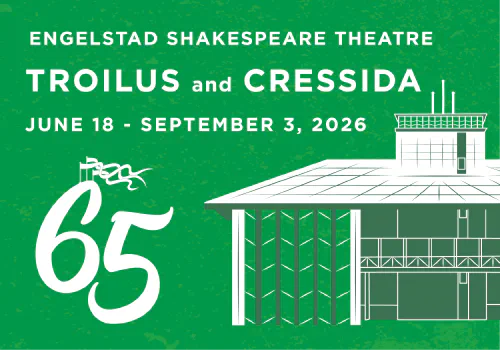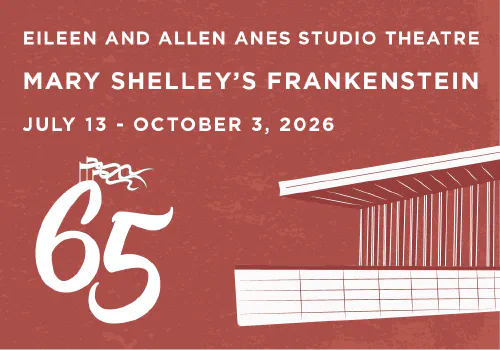NOTE: The articles in these study guides are not meant to mirror or interpret any particular productions at the Utah Shakespeare Festival. They are meant, instead, to be an educational jumping-off point to understanding and enjoying the play (in any production at any theatre) a bit more thoroughly. Therefore the stories of the plays and the interpretative articles (and even characters at times) may differ from what is ultimately produced on stage.
Also, some of these articles (especially the synopses) reveal the ending and other “surprises” in some plays. If you don’t want to know this information before seeing the plays, you may want to reconsider studying this information.
By Jerry Crawford
It is important to note that in Richard III Shakespeare is dramatizing the end of the Middle Ages—Richard is the last medieval king. The Tudors who succeed him are modern in the sense that they realize the power of money in the economy of the state. However, in this play Shakespeare is not interested in this system of economic order—instead he is creating the picture of a medieval despot, an absolute monarch, who, through his tyranny, brings destruction and disorder to the state.
The play opens with Richard setting himself up as a villain. In his first soliloquy, he states he was “sent before [his] time / Into this breathing world, scarce half made up” and then goes on to declare that “since [he] cannot prove a lover / To entertain these fair well-spoken days, / [he is] determined to prove a villain” (1.1.20-21, 28-30). The method of his villainy is Machiavellianism; the reason is his desire for power.
A villain is a man who does evil willfully and deliberately; his philosophy of life is to pursue an evil course, both for his own advantage and for his pleasure. Richard is just such a villain, and he is an artist in evil. Because of his physical deformity (he is, remember, “scarce half made up”), he feels he cannot fit into society, and so he determines to take revenge upon the whole of it.
A man as wholeheartedly villainous as Richard can never arouse an audience’s sympathies, but the artistry of his tactics very decidedly can arouse an audience’s admiration and turn the villain into a dramatic hero, albeit a different type than the “typical” hero. The audience enjoys the artistry separately from the evil, and Shakespeare’s audience, in particular, could revel in the melodramatic gaiety of Richard’s evil-doing. This Elizabethan attitude was the expression of a young and exuberant people who were capable of delighting in the efficient operation of Richard’s kind of evil, an evil embossed with a dark wit.
It is important to understand that Richard’s evil was not satanic—he had no desire to corrupt mankind, although he did so incidentally. The play contains a melodramatic, artificial approach to the conflict of a completely evil individual with his society.
For example: In the second scene of the play, Richard stops Lady Anne, who is taking the corpse of her father-in-law, King Henry VI, to burial. Richard attempts to woo her and says he would “undertake the death of all the world, / So I might live one hour in your sweet bosom” (1.2.123-4). He admits that he killed both Henry VI and Lady Anne’s husband, Edward, prince of Wales, but says, “‘twas thy heavenly face that set me on” (1.2.182). By the time Lady Anne leaves, Richard’s speeches have so swayed her that she has changed from a woman who would cheerfully see Richard dead at her feet to one who nearly looks forward to her marriage to him. When she leaves, Richard brags: “Was ever woman in this humor woo’d? / Was ever woman in this humor won? / I’ll have her, but I will not keep her long. / What! I, that kill’d her husband and his father, / To take her in her heart’s extremest hate, . . . / And yet to win her! All the world to nothing!” (1.2.227-37). The powerful irony of the whole situation is apparent.
Next, working through Buckingham, Richard has his brother (and possible rival to the throne) Clarence murdered. Then, when Buckingham appears to offer Richard the crown, for appearance’s sake Richard comes out in the company of two priests, with whom he has supposedly been in meditation. At first he delicately demurs, but finally he accepts the crown–the goal toward which he has been totally dedicated. Again, the irony of the situation, and Richard’s complete duplicity, are immediately apparent.
Finally, Richard commits his most evil act: the murders of the duke of York and the prince of Wales, the two young sons of Edward IV (and again possible rivals to the throne). Richard had earlier lodged the two boys in the Tower, under the pretense of protecting them. First he asks Buckingham to kill them, but he falters and begs a little time to reconsider. Richard then turns to Tyrrel, the malcontent, and has him hire murderers to do the deed.
To add even further to these dark events, Richard has Buckingham executed: When Buckingham returns to ask for a boon that Richard has promised him, Richard treats him cooly. Buckingham, heretofore entirely loyal to Richard, understands what this coolness means and endeavors to join with Richmond against Richard. However, Buckingham is captured and executed, even though up to that point he had been the major agent of Richard’s ascension to the throne. Richard’s total lack of any sense of gratitude or obligation further stamps him as a complete Machiavel in the eyes of the Elizabethans.
At the end of the play, Richard’s only moment of remorse is caused by the appearance in a dream of the ghosts of all the men whom he has murdered on his way to the crown. Shakespeare uses curses here, and less obviously in earlier scenes, to create a sense of tragic destiny. Shakespeare is obliged to bring the supernatural into play at this point because he has created, in Richard, a man so much in control of his destiny that a superhuman power is the only thing that can conceivably cause his downfall. The spirits curse Richard and bless Hastings, and Richard’s end is sealed.
In creating a character so artificially in control of an unreal situation that the only way he can be removed from the stage is by the influence of the superhuman, Shakespeare has created not only a figure with whom the audience cannot be in sympathy, but also one whom it cannot wholly believe in. Since the play is high level melodrama, however, belief is not essential. But it is interesting to note that Richard’s downfall provides a model for Macbeth’s. Both men were consumed with a desire for power, both men were defeated by supernatural forces, and both men went down fighting to the last. The difference lies in Macbeth’s humanity. His character is a complex intermingling of good and evil; whereas, Richard is the totally unbelievable, totally delightful personification of the force of pure evil.










